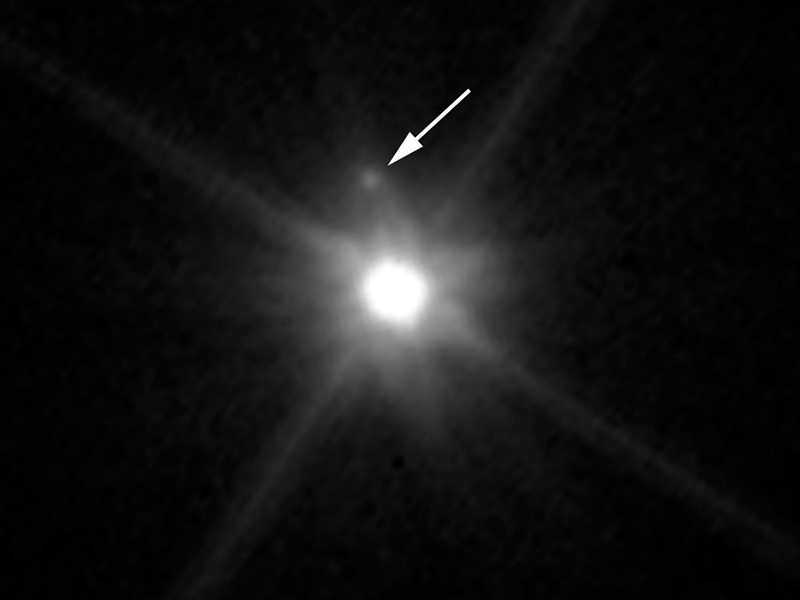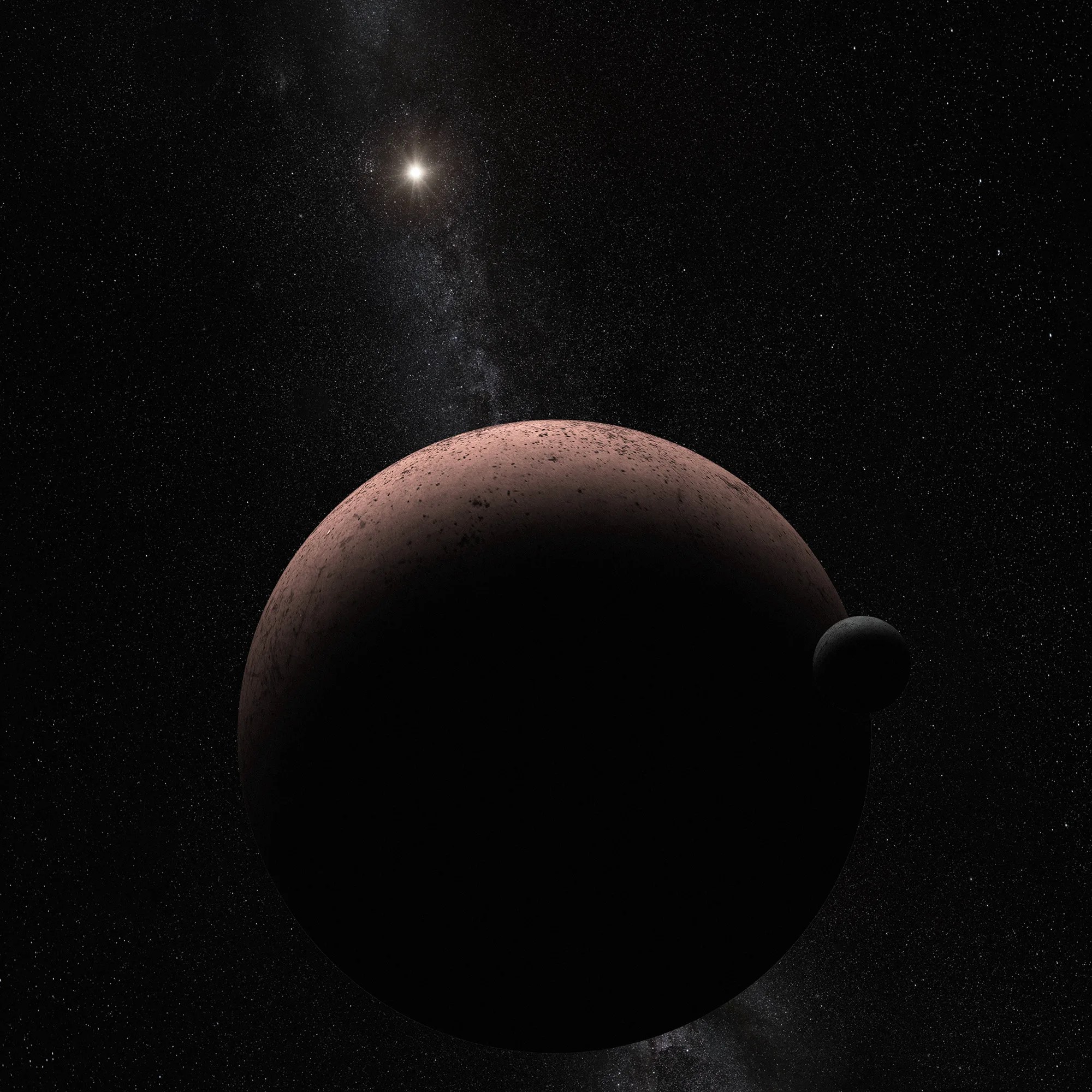Makemake Facts
Dwarf planet Makemake – along with Pluto, Haumea, and Eris – is located in the Kuiper Belt, a donut-shaped region of icy bodies beyond the orbit of Neptune. Makemake is slightly smaller than Pluto, and is the second-brightest object in the Kuiper Belt as seen from Earth while Pluto is the brightest. It takes about 305 Earth years for this dwarf planet to make one trip around the Sun.
Makemake holds an important place in the history of solar system studies because it was one of the objects – along with Eris – whose discovery prompted the International Astronomical Union to reconsider the definition of a planet, and to create the new group of dwarf planets.
Makemake was first observed in March 2005 by M.E. Brown, C.A. Trujillo, and D.L. Rabinowitz at the Palomar Observatory, California. Its unofficial codename was Easterbunny, Brown said, "in honor of the fact that it was discovered just a few days past Easter." Before this dwarf planet was confirmed, its provisional name was 2005 FY9. In 2016, NASA’s Hubble Space Telescope spotted a small, dark moon orbiting Makemake.

Namesake
Makemake was named after the Rapanui god of fertility.
Potential for Life
The surface of Makemake is extremely cold, so it seems unlikely that life could exist there.
Size and Distance
With a radius of approximately 444 miles (715 kilometers), Makemake is 1/9 the radius of Earth. If Earth were the size of a nickel, Makemake would be about as big as a mustard seed.
From an average distance of 4,253,000,000 miles (6,847,000,000 kilometers), Makemake is 45.8 astronomical units away from the Sun. One astronomical unit (abbreviated as AU), is the distance from the Sun to Earth. From this distance, it takes sunlight 6 hours and 20 minutes to travel from the Sun to Makemake.
Orbit and Rotation
Makemake takes 305 Earth years to make one trip around the Sun. As Makemake orbits the Sun, it completes one rotation every 22 and a half hours, making its day length similar to Earth and Mars.
Moons
Makemake has one provisional moon, S/2015 (136472) 1, and it's nicknamed MK 2. It is more than 1,300 times fainter than Makemake. MK 2 was seen approximately 13,000 miles from the dwarf planet, and its radius is estimated to be about 50 miles (80 kilometers).
Rings
There are no known rings around Makemake.
Formation
Dwarf planet Makemake is a member of a group of objects that orbit in a disc-like zone beyond the orbit of Neptune called the Kuiper Belt. This distant realm is populated with thousands of miniature icy worlds, which formed early in the history of our solar system about 4.5 billion years ago. These icy, rocky bodies are called Kuiper Belt objects, transneptunian objects, or plutoids.
Structure
Scientists know very little about Makemake's structure.
Surface
We can't see too many details of Makemake's surface from so far away, but it does appear to be a reddish-brownish color, similar to Pluto. Scientists have also detected frozen methane and ethane on its surface. In fact, pellets of frozen methane as big as half an inch (1 centimeter) in diameter may rest on Makemake's cold surface.
Atmosphere
Makemake may develop a very thin atmosphere, most likely made of nitrogen, near perihelion – when it is closest to the Sun.
Magnetosphere
Scientists do not know if Makemake has a magnetosphere.





